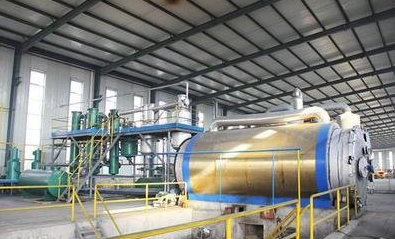Particle pollution problem is becoming increasingly serious, bag type dust removal technology is widely used, the use of dust bags and demand is increasing. It is understood that at present, in the field of industrial dust removal, the main battlefield of treatment is basically circled in thermal power, metallurgy, cement, etc., and the mainstream treatment technology is electrostatic dust removal and bag type dust removal. Compare these dust removal technologies, bag type dust removal because of the wide range of particle size with stable and efficient dust removal function, and PM2.5 also has a high dust removal efficiency, is the most widely used, the fastest development of dust removal technology. As the core component of bag filter, the variety, quality and technical level of bag filter are the important conditions for successful application and rapid development of bag filter. The development and progress of the bag filter is ultimately the development and progress of the dust bag. Many domestic scholars are devoted to the research of dust removal efficiency of dust bag, but ignore the recycling of dust bag after use. Each year, the amount of bag filter media use, corresponding to how many used dust bags will be replaced down waiting for processing, the recycling of used dust bags can not wait.
1. Radiation cracking method
Radiation cracking recycling method is applicable to pure PTFE products, because the additives in PTFE are generally glass fiber, molybdenum disulfide, copper powder, etc.. The glass fiber will be discolored by high-energy radiation. The added copper powder particle size is generally 40μm role, high-energy radiation can not further refine the particles to 10 ~ 20μm, so the radiation cracking method is suitable for pure PTFE processing of secondary products, residual materials and processing of off-cuts such as car chips.
Under the action of accelerated electron rays or high-energy γ-rays, the radiation dose is not less than 100KGy environment, which destroys the carbon and fluorine bonds and causes the breakage of PTFE molecular chain to obtain PTFE products with small molecular weight. Because of the reduction of molecular weight, PTFE becomes brittle, and by the method of airflow crushing or grinding, we can get PTFE ultra-fine powder with particle size of 1~20μm.
The radiation cracking process requires less PTFE material and acts on the PTFE product by high energy rays under certain atmospheric conditions. In the encapsulation step of the process, different products are obtained depending on the atmosphere used. Degradation under inert gas conditions yields perfluorinated alkanes and perfluorinated olefins. Degradation in an air environment yields a purer PTFE or its modified products. Degradation under oxygen conditions yields perfluorinated acid derivatives. In industrial production, degradation under air conditions is generally used, considering cost and usage applications.
The molecular weight of PTFE is altered by radiation, but the effect on its melting point is small. An increase in the radiation dose used in radiation causes a decrease in the molar mass of PTFE molecules and a slight decrease in the melting point. When the radiation dose starts to increase, the molar mass changes more significantly, but when the radiation dose reaches 50 KGy, the changes tend to level off. Also the increase in radiation dose leads to a smaller particle size of the final ultrafine powder. It is found that the radiation causes cross-linking reaction of PTFE, and the elongation at break and tensile strength of PTFE are reduced.

The PTFE ultrafine powder obtained by radiation method not only has the advantages of resistance to acid, alkali, oxidizer and use temperature -200~260℃, but also has good dispersion and can be blended with other materials, but the cohesion is poor. It is widely used as filler for paint, ink, explosives, rocket fixed fuel, etc. There are three main areas of application as follows.
(1) Used as additive of coating: widely used in food, electrical appliances, textiles, packaging and other sectors. Research shows that the addition of 60% of PTFE ultrafine powder in the paint, can improve the corrosion resistance, anti-stick and reduce the coefficient of friction, improve the performance of the paint.
(2) As an additive for printing ink: in the printing ink by adding a certain quality percentage of PTFE powder, can significantly improve the smoothness and gloss of printed materials.
(3) As a modifier of polymer materials: adding 10%~20% of powder in polycarbonate, polyformaldehyde, polyamide, polyphenylene sulfide, silicone rubber, styrene-butadiene rubber and other polymers respectively can significantly improve the performance of finished products such as flame retardant and wear resistant.
Yuanchen Technology official website: www.yuanchenfilter.com

